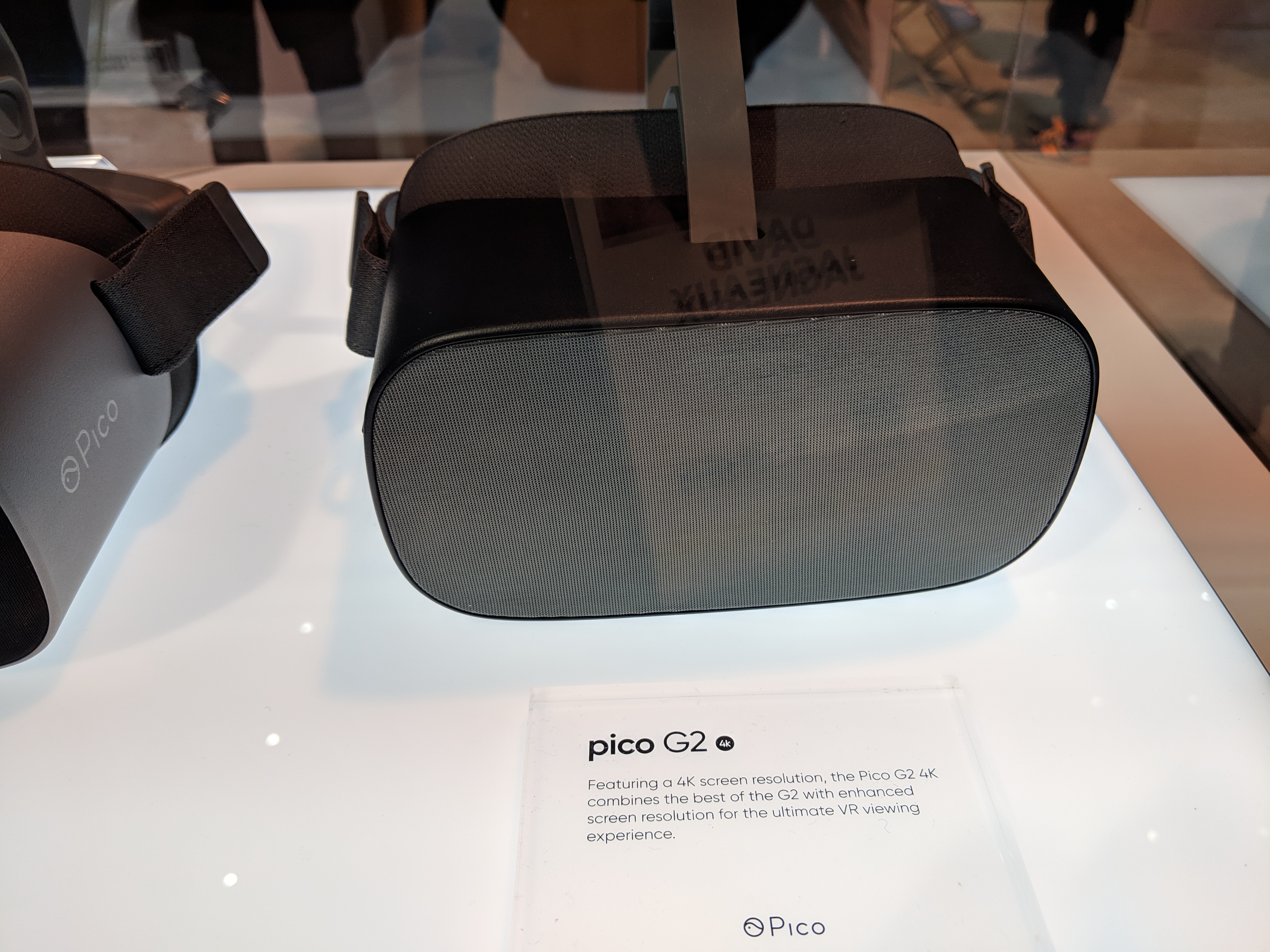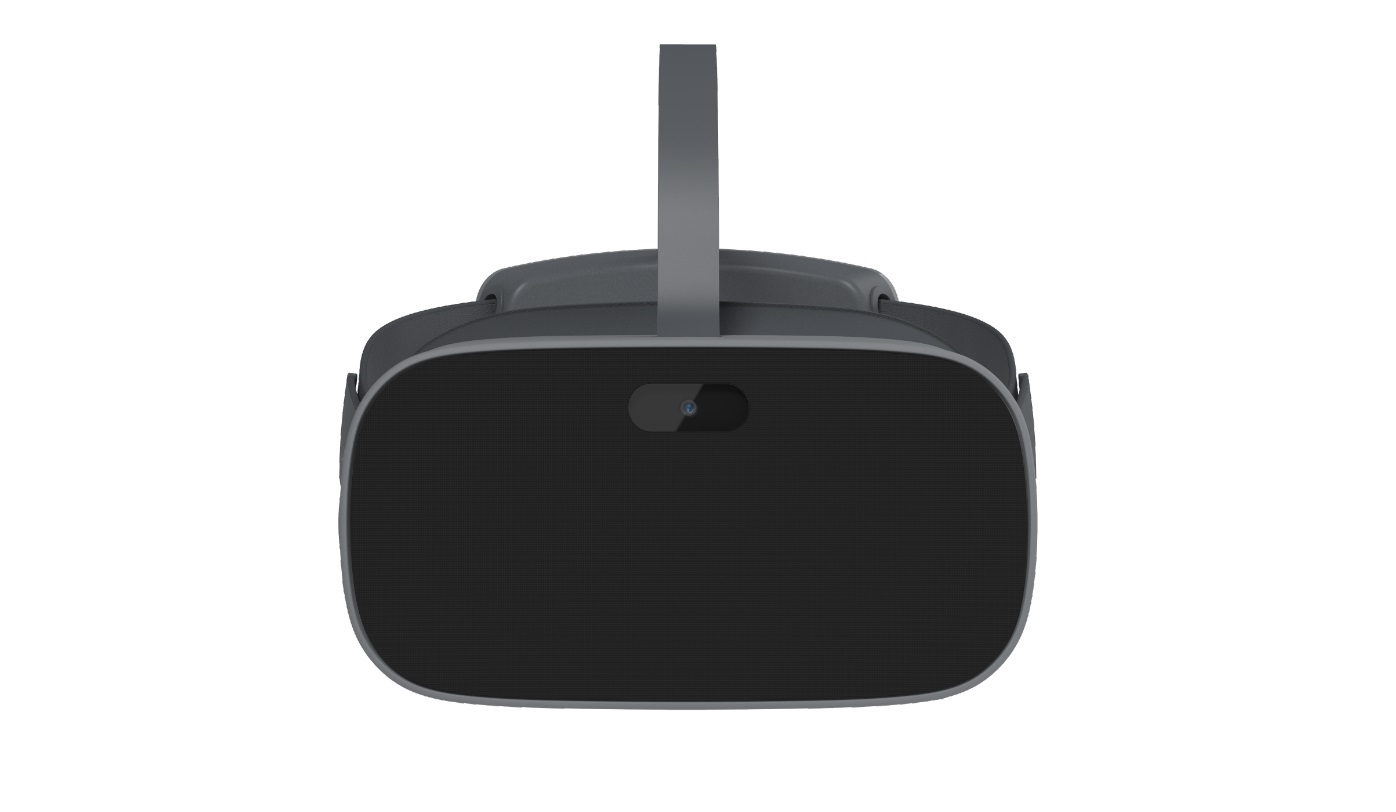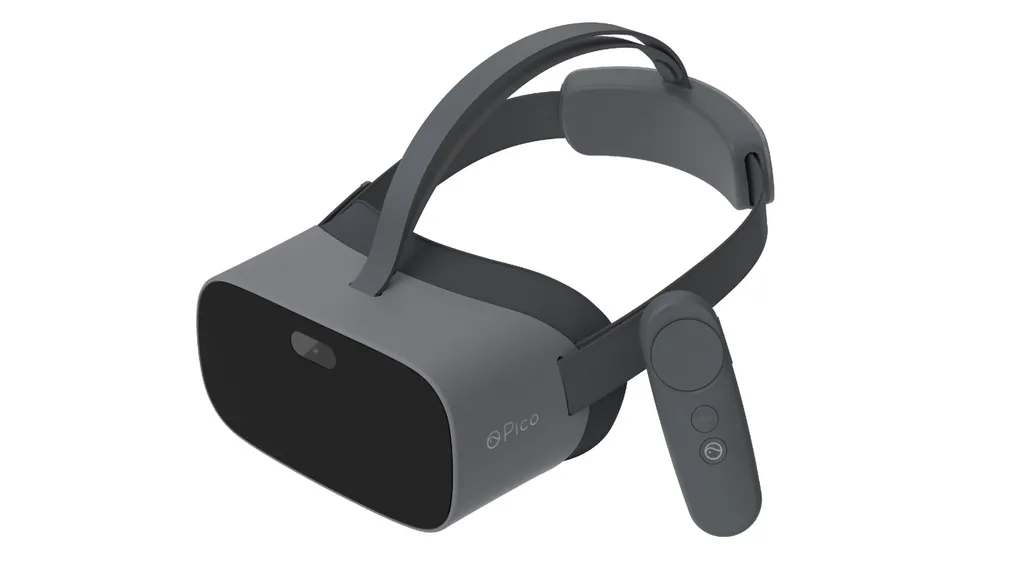Pico showed off the 4K variation of its G2 standalone all-in-one 3DOF VR headset this year at CES and we got the chance to check it out and go hands-on from the show floor. Historically Pico has always been one of those companies that is able to craft some surprisingly impressive hardware (especially in China) but it never quite seemed to find its footing in the software department for consumers with admittedly mixed overall results — even as a Vive Wave supported device.
As a result, Pico recently made the decision to shift to a primarily enterprise-focused strategy, especially with the Pico G2 4K headset. The new headset even has a “Kiosk Mode” for streamlined demo use cases. In fact Pico already has confirmed use cases from businesses that deal with the visually impaired, plane passengers and dental patients manage anxiety, and in-transit entertainment for public transportation.
The “G” in “G2” stands for “Goblin” as this is the second iteration of its Goblin line of products. The original Pico Goblin got a (mostly) positive review from us and the base G2 was originally unveiled back in August. Now, the G2 4K ups the resolution for an all-around crisper experience.
The Pico G2 4K features a combined resolution of 3840×2160 with a 75Hz refresh rate and is powered by the Snapdragon 835, the same chipset as the Oculus Quest. It’s got 32GB storage and 4GB RAM with both the Pico Store and Viveport M as marketplaces.

At their booth at CES I tried out two experiences: an immersive video featuring extremely high-detail insects with very close-up angles and a simple horror game that had me walking around a haunted house. The first one was a great demonstration of how sharp the visuals are, something that a lot of enterprise customers hold in high regard. The second demo looked like a port of a budget Google Cardboard game and didn’t have much business as a showcase piece of software.
The G2 4K fills a very specific niche in the market. On one end of the spectrum you’ve got devices like the Oculus Go, which targets consumers primarily as a 3DOF headset with a single 3DOF controller, and then on the other end is the enterprise Vive Focus (a 6DOF headset with both 3DOF and 6DOF controllers) as well as the forthcoming consumer Oculus Quest (a 6DOF headset with two 6DOF controllers). If you’re interested in 6DOF solutions, then the Pico Neo is more inline with what you’re looking for.
Since the Pico G2 4K is still a 3DOF headset with just a single 3DOF controller, it’s almost as if you upgraded the visuals slightly on an Oculus Go and removed the Oculus Store in favor of a more free-form ecosystem. That’s about what you’ve got here.

The only real major issue I had with the G2 4K is the head strap. At the back of the strap is where the battery is located and the T-strap that goes across the top of your head to connect the headset to the battery is extremely short. So short, in fact, that it literally didn’t fit over my head. During my demo I had to physically hold the headset in place with my free hand which was awkward and uncomfortable.
When I pointed this out the PR representative chuckled and said they have to do the same thing. That’s…not good? Supposedly they’re working on extending the strap, but it’s a baffling design. I couldn’t loosen it at all whatsoever.
Assuming they get the strap fixed the G2 4K is a really nice enterprise 3DOF headset. If you have no need for consumer-facing application or 6DOF tracking it seems like a good starting point for business applications. The Pico G2 4K releases in North America in the first half of 2019 — the price is still undetermined. Check out the website for more details.


























